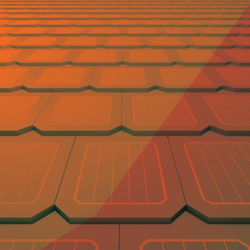High-Performance Thin-Film Indoor Photovoltaics
 With the rapid advancement of the Internet of Things (IoTs) in contemporary society, the energy demand for these systems has become increasingly evident. Indoor photovoltaics (IPVs) offer a promising solution by providing a lightweight and sustainable power source for IoT devices. Among the various types of photovoltaic cells, amorphous silicon (a-Si), organic photovoltaics (OPVs), gallium arsenide (GaAs), dye-sensitized (DSSCs), and the recently perovskite solar cells (PSCs) have shown suitability for indoor applications. Despite their strategic importance, several challenges impede their widespread adoption and development. These include the need for improved adaptability to diverse indoor lighting conditions, enhanced integration with IoT ecosystems, significant reduction in production costs, and addressing concerns regarding device toxicity and long-term stability. To overcome these hurdles, it is essential to optimize fabrication processes, ensure seamless coordination with IoT infrastructures, and develop more precise testing platforms specifically designed for evaluating the performance of indoor photovoltaic technologies. This multifaceted approach will be crucial in driving the progress and broader implementation of IPVs within the realm of IoT.
With the rapid advancement of the Internet of Things (IoTs) in contemporary society, the energy demand for these systems has become increasingly evident. Indoor photovoltaics (IPVs) offer a promising solution by providing a lightweight and sustainable power source for IoT devices. Among the various types of photovoltaic cells, amorphous silicon (a-Si), organic photovoltaics (OPVs), gallium arsenide (GaAs), dye-sensitized (DSSCs), and the recently perovskite solar cells (PSCs) have shown suitability for indoor applications. Despite their strategic importance, several challenges impede their widespread adoption and development. These include the need for improved adaptability to diverse indoor lighting conditions, enhanced integration with IoT ecosystems, significant reduction in production costs, and addressing concerns regarding device toxicity and long-term stability. To overcome these hurdles, it is essential to optimize fabrication processes, ensure seamless coordination with IoT infrastructures, and develop more precise testing platforms specifically designed for evaluating the performance of indoor photovoltaic technologies. This multifaceted approach will be crucial in driving the progress and broader implementation of IPVs within the realm of IoT.
Topics covered include, but are not limited to:
- Internet of Things
- Dye-sensitized indoor photovoltaics
- Amorphous silicon indoor photovoltaics
- Integration of IPVs and the IoTs
- Accurate indoor photovoltaic testing platform
- Perovskite indoor photovoltaics
- Organic indoor photovoltaics
- GaAs indoor photovoltaics
- Environmentally friendly IPVs
- Stability of IPVs
Guest Editors
Zhao-Kui Wang, Soochow University, China
Michael Saliba, University of Stuttgart, Germany
Letian Dou, Purdue University, USA
Wing Chung Tsoi, Swansea University, UK
